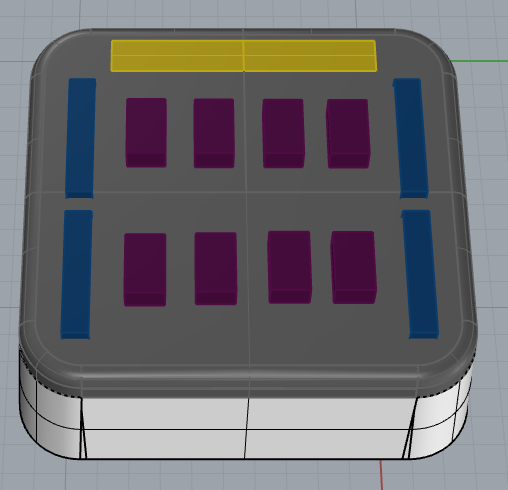It is indeed quite a challenge:)
I believe that Ben used ADC2’s analog GPIOs which conflicted with Wifi, that’s why he had to abandon that eventually. I’ll wait until he replies on this and gives me a number I like:)
I thought of that, wondered if PB expects 5 analog inputs(A0-A4) from the sensor board or if it could receive more, ie connect another board with more inputs, say A0-A9. Whichever the case, having to reprogram the sensor board or program a new board and feed the data to PB, is way beyond my coding knowledge.
This is pretty much what I want to do with some of the inputs. Here’s a brief of the project:
I’m doing a new version of my modular light for my children. A very crude version of the controller is this:
PB will have two outputs, each will be controlled by 2 sliders and 4 slots. Sliders control speed and expansion of pixels moving along the strip. I’m making little colored bricks that fit in the slots, each color will have a resistance in it, so if each slot is connected to an analog pin, I can assign colors to 4 different pixels or groups of pixels. I’ll have at least 6 different colors to choose from, and the way I understand it it’s impossible to have more than one slot per input, unless I do something like the link I provided in my first post. I don’t fully understand how to play with time in PB and switch on/off outputs while reading inputs, so I might come back with questions after I solved hardware.
To make matters more complicated, I also have an Arduino mini in there, with 2 INA219 boards connected to the PB outputs used to calculate how many bricks are connected to PB, and then feed that to PB via yet another analog input. It also switches off the leds if a current limit is exceeded or the battery is too low.
I think you are right, this project screams for WebSockets. I had a go with it a few months back and struggled a bit, couldn’t find a way to properly parse the incoming packets and kind of gave up, maybe I should give it another go.
Thanks a lot for the reply, thorough as always:)
